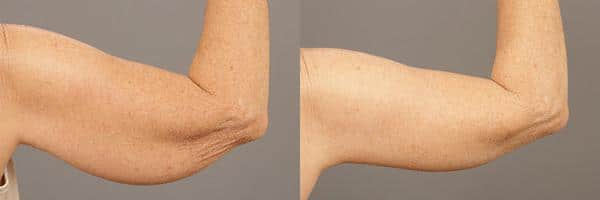Arm Lift in Virginia, Washington D.C. and Maryland.
Achieve toned arms with confidence! Experience the transformative effects of an arm lift at The Naderi Center. In Virginia, our specialists provide precise, surgical treatments to remove excess skin and tighten your arms. From consultation to recovery, enjoy exceptional care and achieve a more sculpted, youthful appearance. Reveal your best self with our expert arm lift procedures.
Embark on a journey of aesthetic excellence with The Naderi Center. Experience unparalleled artistry and precision for transformative beauty.
Discover Arm Lift Benefits at The Naderi Center
At The Naderi Center, our board-certified specialists are here to transform your arms with precision and artistry. An Arm Lift removes excess skin, tones your shape, and restores balance, so you can enjoy wearing what you love and moving through life with newfound freedom and confidence.
Sleek Silhouette
Get rid of sagging skin to achieve toned, youthful arms you'll be eager to show off.
Versatile Wardrobe
Embrace sleeveless dresses, tank tops, and more without a second thought, expanding your fashion choices.
Boosted Confidence
Stand taller and feel bolder, knowing that your arms match your vibrant, youthful spirit.
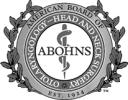
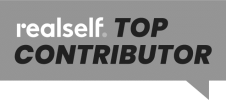
What is Arm Lift Surgical?
Flabby and loose arms are often referred to as “batwings” This is a common problem many encounter. This problem can affect any range, gender, and body type. Factors that can contribute to flabby and loose arms include genetics, aging, and weight loss.
Did you know that by the time you turn 30, muscle mass can begin to decrease by 5%? Patients who have experienced massive weight loss, as seen with gastric bypass, are particularly prone to experiencing flabby skin.
An arm lift, or brachioplasty, is a surgical procedure that reshapes and gives a toned appearance to the upper arm, which is often required after massive weight loss. A reduction in “bat-wings” or sagging of the arm skin as well as tightening and smoothing of the supportive tissue in the upper arm region can be achieved. Both women and men can struggle with these aspects, and even with proper diet and regular exercise, it may be impossible to improve. In this case, a brachioplasty will be necessary to restore youthful, trim arms.
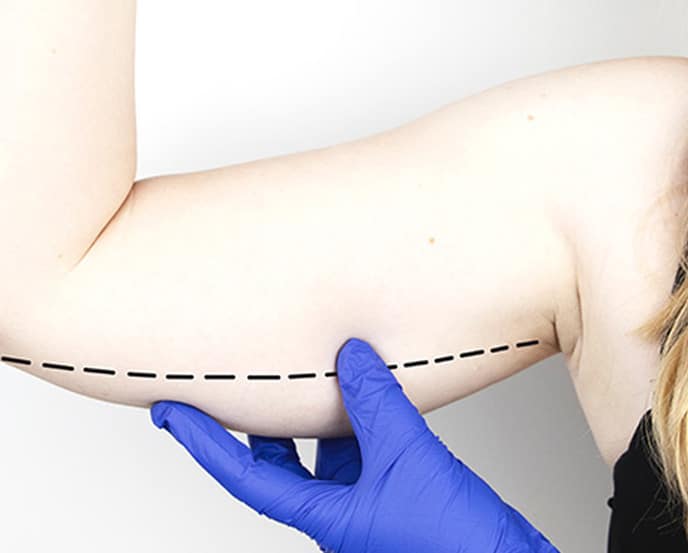
Ideal Candidate for an Arm Lift
Good candidate for an Arm Lift:
- Has hanging, loose, lax, and excess skin along the upper arm
- Has achieved an ideal and stable weight and is not significantly overweight
- Has no medical conditions that will hinder surgical healing
- Is a non-smoker
- Has a positive outlook and realistic goals for what can be achieved
- Is in overall good health
Arm Lift Surgical Technique
Steps to Performing an Arm Lift
Step 1
An ellipse incision, running along the bottom portion of the arm, from the armpit region towards the elbow is made. The level of correction and the individual patient’s anatomy will determine the exact pattern and incision length.
Step 2
Starting from the elbow region and proceeding towards the armpit, unwanted fatty tissue and skin are removed.
Step 3
As the unwanted tissue is resected, the remaining tissue is pulled taut and secured with temporary staples. To achieve optimum results, liposuction may also be used to nicely contour the upper arm.
Step 4
Sutures are placed with a plastic closure to ensure proper healing.
Step 5
A compression garment is applied to ensure proper healing and minimize swelling.
Different Arm Lift Techniques

Liposuction of the arms
This technique offers the least-invasive manner to contour the upper arms along with minimal scarring and short recovery time compared to other techniques. However, this approach primarily addresses the fat in the arms and tends to leave patients with excess skin if there is poor skin elasticity. A surgeon would typically choose this approach for younger patients or those with good skin elasticity in the upper arms, thus providing a smoother and trimmer contour afterward.
Hidden/Minimal incision brachioplasty
A less invasive approach to Brachioplasty with the ability to address some excess skin is available. This technique creates an incision in the armpit region resulting in a minimally visible scar, and most patients experience minimal discomfort after this procedure. Liposuction can be used in conjunction with this technique to remove excess fat. Yet, adequate skin elasticity and minimal excess skin are considered when a surgeon determines whether this is the appropriate approach.
Traditional brachioplasty
Traditional brachioplasty can remove saggy skin as well as fat in the upper arm region, thus tightening the skin and producing a desirable contour. The incision runs along the bottom of the upper arm, from the elbow to the armpit, which tends to result in a significant Brachioplasty scar. This is the most common approach cosmetic surgeons use to address excessively loose skin in the upper arm region.
Extended brachioplasty
Extended brachioplasty addresses more than just excess loose skin and fat in the upper arms as seen in the traditional brachioplasty. This technique also addresses sagging on the side of the chest which is typically seen after massive weight loss. Ultimately, improvements in the appearance of the upper arms and sides of the chest can be achieved. However, the incision extends from the elbow, under the arm, and along the chest wall leading to an extensive scar. This would be the preferred approach for patients with excessively loose skin in the upper arms and sagging skin on the sides of the chest caused by extreme weight loss.
Fish-incision brachioplasty
Fish-incision Brachioplasty, like traditional Brachioplasty, addresses both extra skin and fat of the upper arms that results after vast weight loss. The two techniques differ in the shape of the incision, and ultimately, the resulting scar. Instead of a straight scar which results from the traditional technique, the resulting scar from the fish-incision brachioplasty is an S-shaped scar concealed along the bicep, making it hidden from front and back views. Fish-incision brachioplasty is performed if patients prefer to have a scar in the inner arm rather than the bottom portion of the upper arm.
Crescent brachioplasty or a “mini-arm lift”
A crescent Brachioplasty, or “mini arm lift”, is a surgical technique that can address minimal fat and skin excess that results from weight loss. For this technique, a “crescent-shaped” incision is made near the armpit region. As a result, the scar is virtually hidden within the armpit and confined within short sleeves. This is the preferred approach for those who have minor skin laxity and excess fat in the upper arms.
Testimonial
“So sorry I may never see you again, but so very happy you were placed in my life at the right time!! I could not be happier with my arm lift by your skill & knowledge. I just wanted you to know again how thankful I am to you. So, I wish you much success and happiness wherever you go and whatever you do in your future! Love and Peace! God bless you always, Renee Johnston, Johnny sends his prayers also!!”
Compression Garment after Arm Lift
Immediately after surgery, a compression garment is put on the patient and this must be worn all day and night for the first three weeks, and longer if recommended by your surgeon. The special post-surgical garment should only be removed while showering in which the waterproof dressing would protect the wound but should resume wear immediately afterward. Patients are advised to not bend the elbow for the first 24 hours after surgery. After a week, the dressing will be removed and will be replaced with special scar tape. Any strenuous physical activity should be ceased for the first two weeks, and then light normal activity can be resumed 3-4 weeks after surgery.

Improving the appearance of your scar after Arm Lift treatment
Brachioplasty has become increasingly popular as a means to rejuvenate the upper arm, especially after massive weight loss. Though hindrance towards this procedure mainly lies within the extensive scar that can result, many would deem a lengthy scar an appropriate trade-off for more contoured arms.
The double ellipse technique results in a straight scar that runs along the underside of the upper arm, making it inconspicuous during most daily activities.
The extent of scarring is variable between patients. There are many factors that can contribute to the appearance of the resulting scar including;
- Location of scar
- Skin tone
- History of keloids or raised scars
- Post-operative sun exposure
The scarring that can result after surgery is inevitable, but thanks to the progressive nature of modern medicine, there are ways to minimize the visibility of scars. Using the garment as recommended by the surgeon in conjunction with taping along the scar can help with healing and preventing the widening of the scar. After about 2-3 weeks after surgery, which is when the incision is fully healed, you can use silicone-based gel to assist with further scar healing. It is essential that the patient uses sunscreen of 30 SPF or greater along the scar and avoids direct sun exposure to the scar for at least six months after surgery.
Cost of a brachioplasty
There are a variety of factors that determine the overall cost of your arm lift procedure.
- Surgeons fee: $7,500 – $9,500
- Anesthesia fee: Depends on the length of the procedure
- Hospital and Surgical Facility Fees: Depends on the length of the procedure
- Post-Surgery Garments: Included with surgeon’s fee at The Naderi Center
- Pre-Surgical Medical Clearance and Lab Tests: Usually covered by medical insurance
- Medication Costs: Usually covered by medical insurance
- Follow-Up Visits: Included with surgeon’s fee at The Naderi Center
Preparation for an Arm Lift
At The Naderi Center, we believe the success of any cosmetic procedure can be improved with proper patient preparation. We go above and beyond to make sure that our patients are medically, emotionally, and physically ready for the cosmetic surgery procedure.
Shopping List Before Arm Lift
- Prescriptions
Submitted to your pharmacy. Your pharmacy should contact you when ready to pick up. - Stool Softener (preferably MiraLAX)
Helps with constipation associated with narcotic pain relievers. - Tylenol (Acetaminophen)
Alternative to narcotic pain medication if pain is not severe. Do NOT take NSAIDS. - Compression Garment
Provided to you by The Naderi Center.
3-4 Weeks Before Arm Lift
- Obtain Medical Evaluation and Clearance. Make a visit to your primary care doctor to complete your medical evaluation and laboratory testing. Your surgeon may request for you to also be evaluated by a specialist. Please ensure any preoperative requests are completed 2 weeks before surgery.
Work and Recovery Arrangements. Make any arrangements to be off from work or other strenuous activities while you are recovering from this type of surgery. Have extra help available, particularly if caring for small children.
Smoking. Tobacco, cigarettes and nicotine consumption will cause poor wound healing, longer healing times, and excessive scarring. We advise discontinuing these products more than 4 weeks prior to surgery.
2 Weeks Before Arm Lift
Surgery Preop Appointment. You will come in for your preop appointment where you will review the surgery plan with your surgeon and go over logistical surgery details with your patient coordinator. Bring your questions as well as any individuals who will be part of your support and healing.
DIET/SUPPLEMENT RESTRICTIONS. Avoid foods, drinks, and herbal supplements that can increase the risk of bleeding and bruising. Avoid aspirin, Ibuprofen, Naproxen, Motrin, blood thinners, vitamin E, omega-3, fish oil, and alcohol. Use Tylenol in place of other over-the-counter pain medications.
Fill Prescriptions. These may include antibiotics and/or pain medication after surgery. Make sure you understand how and when to take all medications. We suggest keeping a notepad to keep track of the medications you have taken.
Night Before Arm Lift
DO NOT EAT OR DRINK ANYTHING AFTER MIDNIGHT OR SURGERY WILL BE CANCELLED. If prescribed, take medications with a small sip of water.
Set Up Home Recovery Area: This may include pillows, blankets, books, television, and anything else to assist with a comfortable recovery.
Bathing: You can shower but do not apply lotion, perfume, hair product, etc.
Recovery After an Arm Lift in Reston, VA, and Chevy Chase, MD
The recovery from a brachioplasty will take from one to two weeks. Patients generally feel well enough to return to work in seven to fourteen days, sometimes sooner. At this time, light activities can be resumed, although heavy lifting and vigorous exercise should be postponed for three to four weeks.
Bruising and swelling are common along the upper arm during the initial brachioplasty healing period. To avoid unwanted swelling or fluid accumulation, we recommend a compression garment be worn for two to four weeks. In some cases, drain tubes may also be necessary. Mild to moderate discomfort is not uncommon, so your surgeon will prescribe pain medications for a comfortable healing period.
Night of Arm Lift
Movement is Important. Make sure to get out of bed and be up and walking around immediately after your surgery. When lying down in bed or on the couch, make sure you are moving your legs and ankles. Take deep breaths frequently to keep your lungs clear.
Sleep. Sleep on your back with your head and legs elevated (1-2 pillows). Since the incisions are on the front and the back it can be difficult to get comfortable. Sleeping on your side is ok too if that allows you to feel less pulling at the incision sites. Continue this for one to two weeks.
Nutrition after Arm Lift
- Diet. A light low-fat diet is best after surgery. You may start a regular diet after your surgery as long as you are not feeling nauseated or vomiting.
Hydration. Stay hydrated by drinking 8-10 glasses of water a day. Avoid alcohol for two weeks while you are still having to take pain medication.
Medications after Arm Lift
Pain. You will be prescribed pain medication for post-operative pain control. If your discomfort after surgery is not strong you are welcome to take Tylenol in place of the prescribed medication. Do not take the Tylenol with the pain medication, as most often the medication you are prescribed will have Tylenol in it. Do not exceed 4,000 mg of Tylenol in any 24-hour time period. Take medication with food to minimize the risk of nausea.
Nausea. If you are experiencing nausea, which is common after general anesthesia as well as a known side effect of some stronger pain medications, we advise that you take your nausea medication. You may have been given a Scopolamine patch that is placed behind your ear. This will deliver anti-nausea medication for three days after its placement.
Constipation. You will experience constipation if taking narcotic pain relievers. Miralax or other over-the-counter laxatives are recommended. Do not wait to take until you are constipated. Begin treatment with narcotic use.
Medications to Avoid. Take only those medications approved or prescribed by your surgeon. Avoid medications containing aspirin or ibuprofen (Advil, Motrin, Ibuprofen, others) for two weeks before and after surgery. These medications may increase bleeding.
Substances to Avoid. Avoid alcohol, nicotine, and caffeine, for these will dramatically slow the healing process.

Activity After Arm Lift
Physical Activity. Do NOT remain in bed all day. Although it will be uncomfortable it is imperative that you move around and at least take walks around the house in order to facilitate healing. Avoid lifting more than 5 lbs, straining, bending, or any cardio activity.
Exercise. Light physical activity may be resumed 3-4 weeks after surgery. Remember to start easy and build back up to your previous exercise levels. At 4- 6 weeks or when further instructed by our plastic surgeons, more intense exercise can be started. Just know that swelling may transiently be worse with exercise.
Compression Garment. Expect to wear a compression garment all day and night for the first three weeks, and for a few weeks thereafter as wanted or suggested by your surgeon. The garment should fit snugly but not too tight so that you have trouble breathing or develop wounds or blisters from the compression. Wear your garment at all times except for when you are showering or to wash it. This will help with minimizing swelling and help in contouring the body.
Driving. Do NOT operate a vehicle or make important decisions until you have been off pain medications for 24 hours. Use good judgment. After being off pain medications automobile travel can be resumed, although frequent breaks are needed approximately every 2 hours to prevent blood pooling and clots.
Return to work. Most patients require approximately 7-14 days off work depending on their job responsibilities. Returning to work with a light schedule initially or even part-time can be beneficial as well.
Travel. Automobile travel can resume though frequent breaks are needed, approximately every 2 hours to prevent blood pooling and clots. Airline travel is restricted until 1-week postop. You will notice increased swelling with airline travel and this can happen even 6-8 weeks postop related to the pressure changes that occur.
Sexual Intercourse. Sexual activity can be resumed when you feel ready with no restrictions and the incisions have adequately healed.
Bathing after Arm Lift
Showering. You may shower with assistance the day following surgery. Remove your garment. Incisions are covered with a waterproof dressing and require no attention. Replace the garment after your shower.
Hot Tubs/Baths/Swimming Pools. No tub baths or Jacuzzi until your incisions have healed, and been approved by your surgeon, which is usually around 3-4 weeks. It is best to wait one month for hot tubs as they tend to have more bacteria than regular chlorinated swimming pools.
How to take care your drains after Arm Lift
- Drains. Suction drains are needed typically after body lift surgery. They prevent fluid build-up and help with healing. If drains are placed, you will need to empty their contents and record output. The nurses in the recovery room will provide detailed instructions. You should also watch our video DRAIN CARE on our website.
How To Take Care Of Your Incisions After An Arm Lift
Incisions. Your incisions are covered with a waterproof dressing. No dressing changes or incision care is required. After your first postop visit, the dressing will be removed and a special scar tape will be applied. Additional tape is provided so you can continue a planned scar regimen.
Stitches. All stitches are dissolvable.
Sun Exposure. Avoid and minimize sun exposure. Use an SPF of 30 or greater when outdoors. Even a mild sunburn can worsen swelling and irritate every single incision that is healing.
Scar gel. Scars may take up to a year to fully heal. After your incisions have completely healed and when your doctor has told you it is safe, you can begin to use silicone-based gel on your scars to improve healing scars.
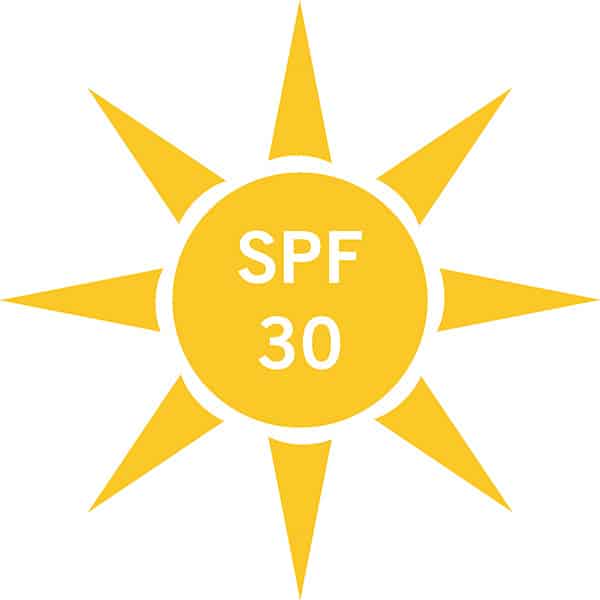
What To Expect After Arm Lift
Drainage. Drainage can occur from the incision sites for the first week after surgery. The drainage will be blood-tinged. You may use gauze or a light pad to reinforce post-op dressings if this occurs.
Bruising. You can expect to have bruising on the affected and surrounding area. Most bruises will heal after about 2-4 weeks. The bruise will go from a purplish color to a yellow/green shade as it starts to resolve.
Swelling. Swelling in lifted and all surrounding areas is to be expected for weeks and sometimes months. The swelling can improve with intermittent rest and compression garments. Exercise and physical activity can transiently worsen swelling but is encouraged.
Itching. Itching at the incision sites and surrounding areas is normal for a few days or weeks. You may take Benadryl to help with this.
Pain. It is normal to experience tightness, pressure, soreness, itchiness, and fatigue for several days to weeks following surgery as the body recovers.
Range of motion. You may experience a limited range of motion for the first couple of weeks depending on the extent of the body lift, especially if a tummy tuck has been incorporated. This is normal. By the second week, you will gradually notice more range of motion and the ability to stand more upright.
Sensory Changes in Skin. You may feel reduced or heightened sensation in the affected areas. This is normal. You can expect the return of normal sensation after a few weeks to months.
Do Not’s After Arm Lift
- DO NOT apply hydrogen peroxide to incision sites. Keep postop dressings in place until follow-up.
DO NOT soak in baths, Jacuzzis, or hot tubs until all incisions have fully healed.
DO NOT take Aspirin, Ibuprofen, Naproxen, or other blood thinners until your surgeon advises you it is safe.
- DO NOT apply heating pads or ice packs to the treated areas unless otherwise instructed by your surgeon.
Emergency Situations After Arm Lift
Signs of Infection. Spreading redness, worsening swelling, increased drainage or drainage of pus, worsening pain, and warmth at the incision site. Temperature over 101 degrees Fahrenheit.
Excessive Bleeding. If the dressings are saturated with bright red blood you have to make very frequent dressing changes.
Other Emergency Situations. Shortness of breath or difficulty breathing, chest pain, lightheadedness that does not quickly resolve, severe vomiting, pain, or asymmetric swelling in your legs.
Shopping List After Arm Lift
Prescriptions: fill prescriptions prior to your surgery date
Compression Garment: provided to you by The Naderi Center
Tylenol (Acetaminophen): an alternative to narcotic pain medication if the pain is not severe. Do NOT take NSAIDs.
Laxative: to reduce constipation that may be caused by anesthesia or narcotic pain medications.
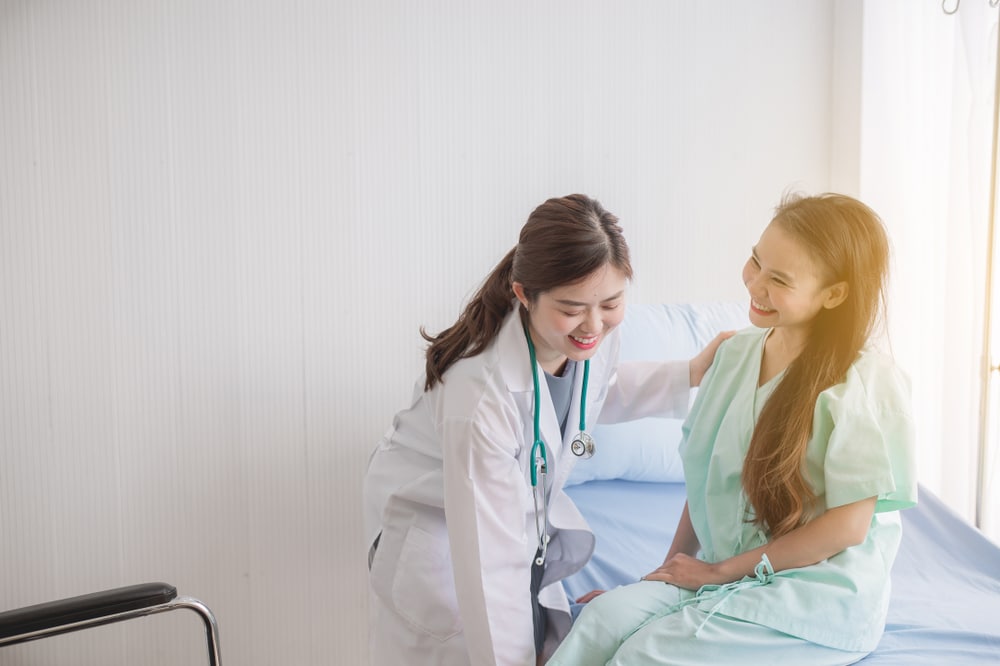
Risk and Safety of Arm Lift Surgery
As with any surgery, there will be the possibility of risks and complications. As a result, it is essential that the patient understands these potential risks and complications that are associated. Despite risks and complications being rare, it is important to discuss them with your plastic surgeon prior to your surgery.
Potential risks from an arm lift include
Risks of General Anesthesia
Skin discoloration/swelling
Infection
Pain
Scars
Asymmetry
Diminished (or loss of) skin sensation
Nerve damage
Arm tightness
Seromas
Arm Lift Specialists in Reston, VA, and Chevy Chase, MD
Our board-certified plastic surgeons pride themselves on providing aesthetically pleasing results, which reflects our expertise in body contouring procedures. Our experienced surgeon is a firm believer in establishing a good patient/surgeon relationship in order to achieve optimal results. Understanding the patient’s personal lifestyle and long-term aesthetic goals is a fundamental part of our consultations. Our surgeon will also review the patient’s medical history and current medications.
Ensuring that the patient is informed on available techniques for the arm lift is a priority for our plastic surgeons. They will also be able to answer any questions that the patient may have and that may arise during the consultation.
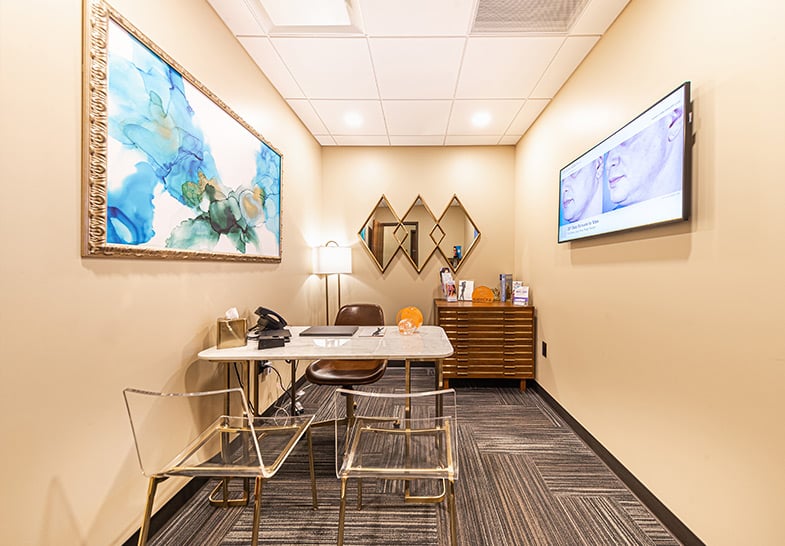
Our plastic surgeons will show before/after photographs of our recent Brachioplasty patients to create a full picture of the potential results. Finally, our surgeon will go over the benefits and limitations of the Brachioplasty, as it applies to the individual patient and the potential surgical risks. If the arm lift is determined to be the right procedure for achieving the desired results, our plastic surgeons will create a personalized treatment plan. You will also meet with a patient coordinator who will discuss costs and subsequently work closely with you throughout the surgery preparation process.
Those interested in the potential benefits of an arm lift are encouraged to schedule a consultation with our plastic surgeons at the Naderi Center. When considering a brachioplasty procedure it is imperative to do your research and consult with an expert body plastic surgeon to receive their specialized advice and opinion. Consultations are available at the Reston, Virginia office (703.481.0002). For those coming from outside of the immediate area, please inquire about a virtual consultation.
Arm Lift FAQs
Who is an ideal candidate for an arm lift?
An ideal candidate for an arm lift is someone with significant skin laxity or excess fat on their upper arms, who is in good overall health, and has realistic expectations about the outcomes.
How long is the recovery period after an arm lift?
Recovery from an arm lift typically takes about 2 to 4 weeks. Patients can usually resume light activities within a week but should avoid strenuous exercise for at least 4 to 6 weeks.
What are the potential risks of an arm lift?
Potential risks include infection, scarring, asymmetry, and changes in skin sensation. However, these risks are minimized when the procedure is performed by a qualified and experienced surgeon.
How long do the results of an arm lift last?
The results of an arm lift can be long-lasting, especially if you maintain a stable weight and follow a healthy lifestyle. However, natural aging will continue to affect the skin over time.
Can an arm lift be combined with other procedures?
Yes, an arm lift can be combined with other procedures such as liposuction, tummy tuck, or breast lift to achieve a more comprehensive body contouring result.
What is the typical cost of an arm lift?
The cost of an arm lift varies based on factors such as the surgeon's experience, the complexity of the procedure, and the location of the clinic. It is best to consult with a surgeon for an accurate estimate.
Will there be visible scars after an arm lift?
Scarring is an inevitable part of any surgical procedure. However, a skilled surgeon will place incisions in discreet locations and provide instructions on scar care to minimize their appearance.
How should I prepare for an arm lift?
Preparation includes a thorough medical evaluation, discontinuing certain medications, stopping smoking, and following pre-operative instructions provided by your surgeon to ensure the best possible outcome.
What type of anesthesia is used during an arm lift?
An arm lift is typically performed under general anesthesia, ensuring that you are completely asleep and comfortable during the procedure.
When can I return to work after an arm lift?
Most patients can return to work within 1 to 2 weeks after an arm lift, depending on the nature of their job and their personal recovery progress. Always follow your surgeon's advice regarding your specific situation.
Can an arm lift be combined with other procedures?
Yes, an arm lift can be combined with other procedures such as liposuction, breast lift, or tummy tuck. Combining procedures can enhance overall body contouring results and allow for a single recovery period. Discussing your goals with your surgeon will help determine the best approach for your individual needs.
Are The Results Of An Arm Lift Permanent?
As long as you maintain a stable weight the result of your arm lift will be permanent. As you age the skin will increase in laxity and the original firmness of the arms after your brachioplasty will diminish slightly. However, with a stable weight and exercise the arm lift results are permanent.
What Arm Lift office is near me?
If you live in the states of Virginia or Maryland, The Naderi Center for Plastic Surgery and Dermatology offers arm lift among its services. For a full list of services, please visit our Locations page.



